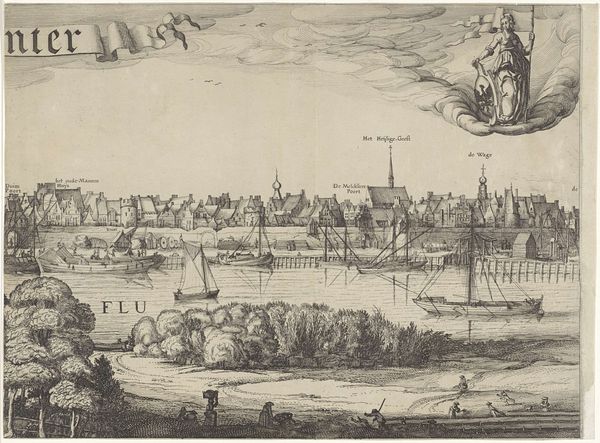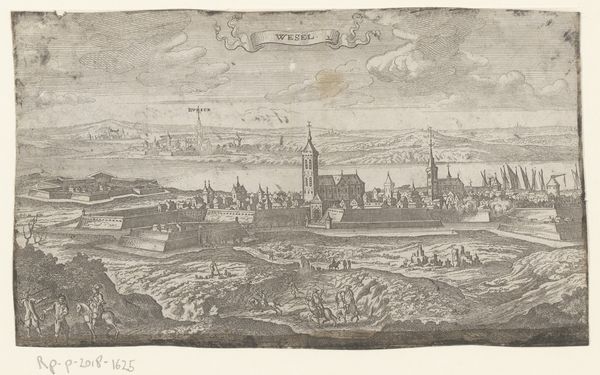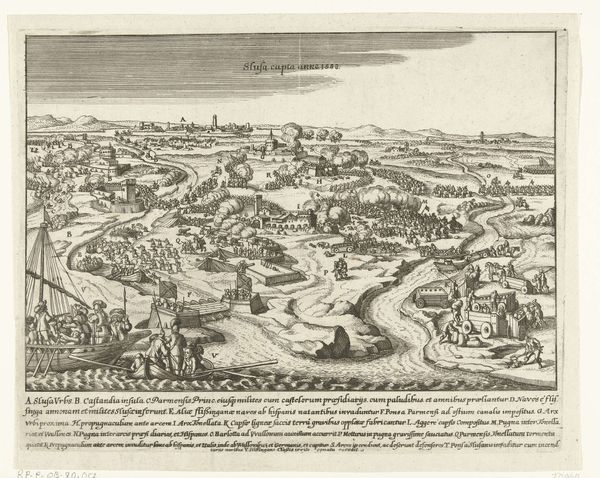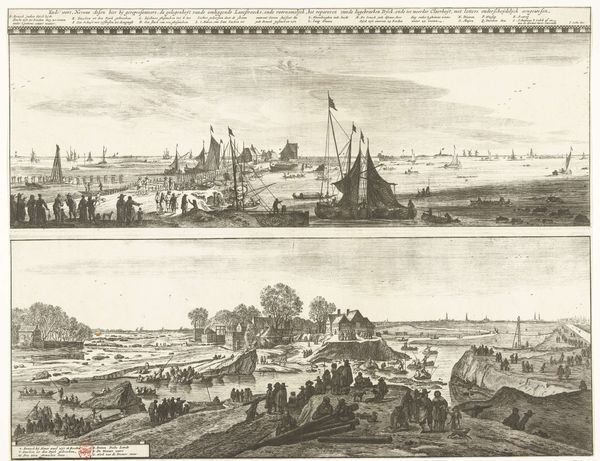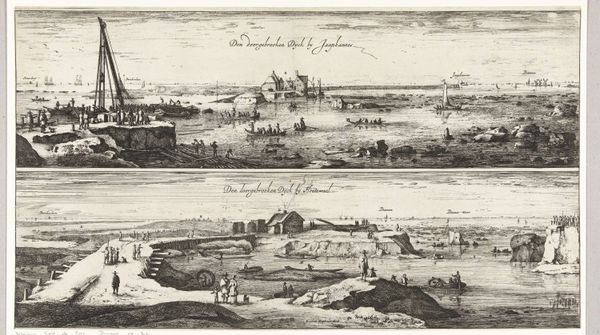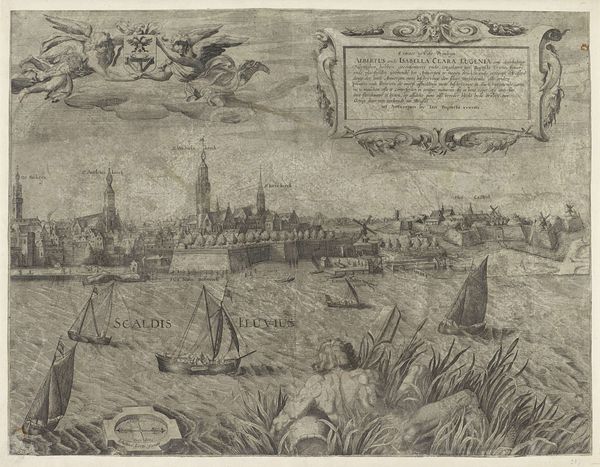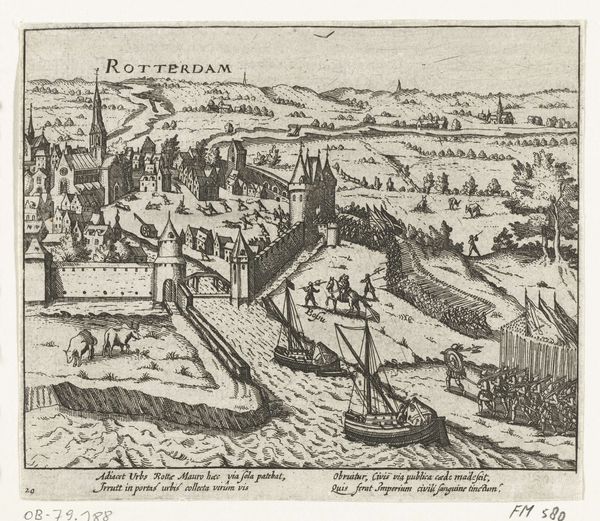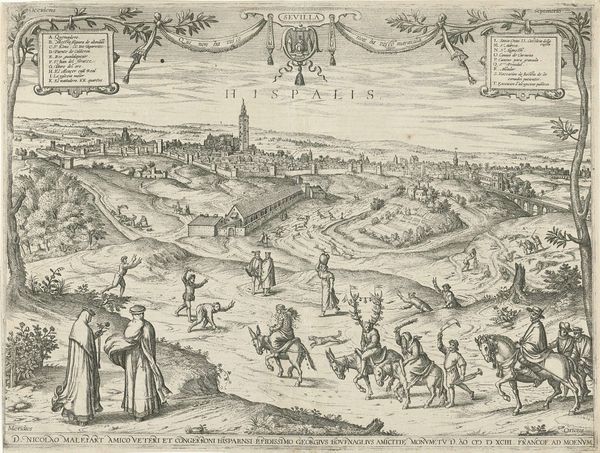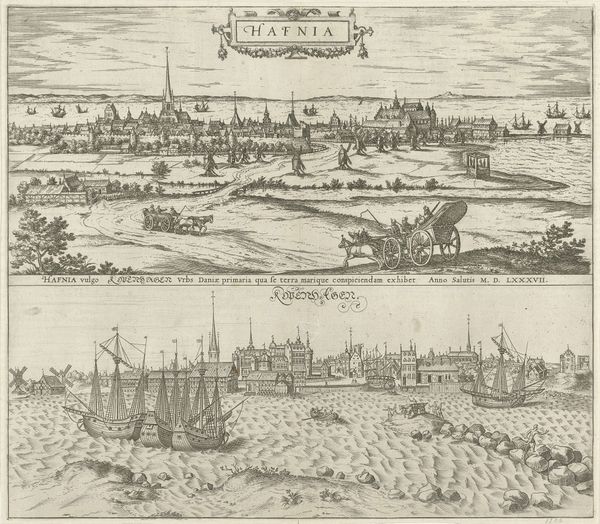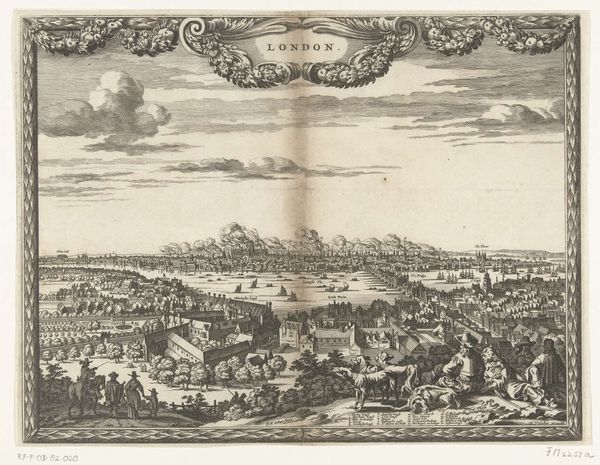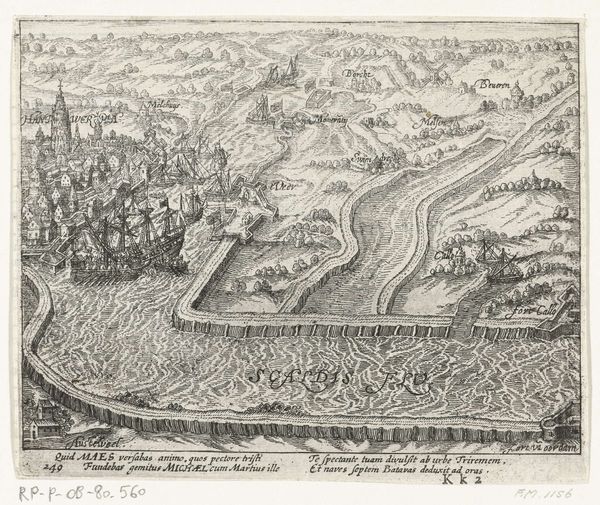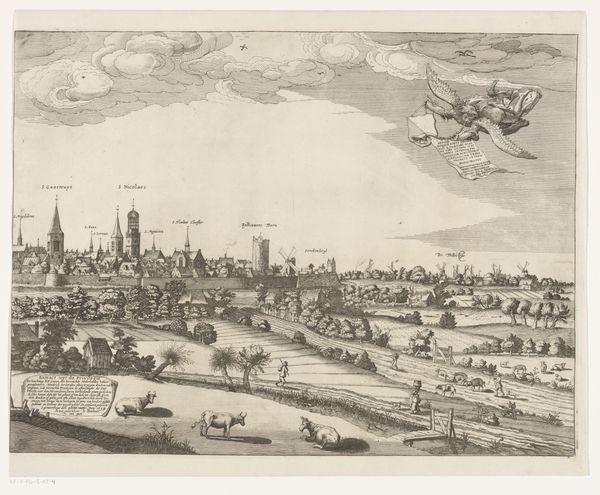
print, engraving
#
baroque
#
dutch-golden-age
# print
#
landscape
#
perspective
#
cityscape
#
engraving
Dimensions: height 57 mm, width 142 mm
Copyright: Rijks Museum: Open Domain
Editor: Here we have Willem Hondius' engraving, "Dordrecht after the St. Elizabeth's Flood, 1421," created sometime between 1626 and 1628. It’s a really detailed cityscape… kind of dreamlike, almost. What do you see in this piece, especially thinking about its context? Curator: What strikes me is how this image visualizes a community's relationship with disaster. The flood, a radical alteration of the landscape, becomes a marker of identity, shaping how Dordrecht remembers itself. Hondius is not simply depicting a place; he's depicting a historical trauma. How might this representation shape communal memory, and perhaps even resilience? Editor: I see what you mean. The "1421" floating above the distant horizon—it's like the date is part of the scenery itself, impossible to ignore. But doesn't idealizing the scene risk erasing the very real suffering the flood caused? Curator: Precisely. While the composition offers a sense of order and recovery, we need to critically examine whose perspective is being centered. Does the artist acknowledge the power imbalances inherent in disaster recovery? Who had the agency to rebuild, and who was left further marginalized? We must analyze the potential erasure of the voices and experiences of those most affected. Editor: So, the image is not just a record but also an act of interpretation—possibly even an act of power? Curator: Exactly! And that tension – between documentation, interpretation, and the exercise of power – is where the most compelling questions about history and representation reside. Editor: Wow, I’ll never look at a cityscape quite the same way again. Thanks for making me think about the image's role in shaping our understanding of the past and present. Curator: My pleasure! And remember, questioning the narratives presented to us is the first step toward creating more inclusive and equitable representations of history.
Comments
No comments
Be the first to comment and join the conversation on the ultimate creative platform.
